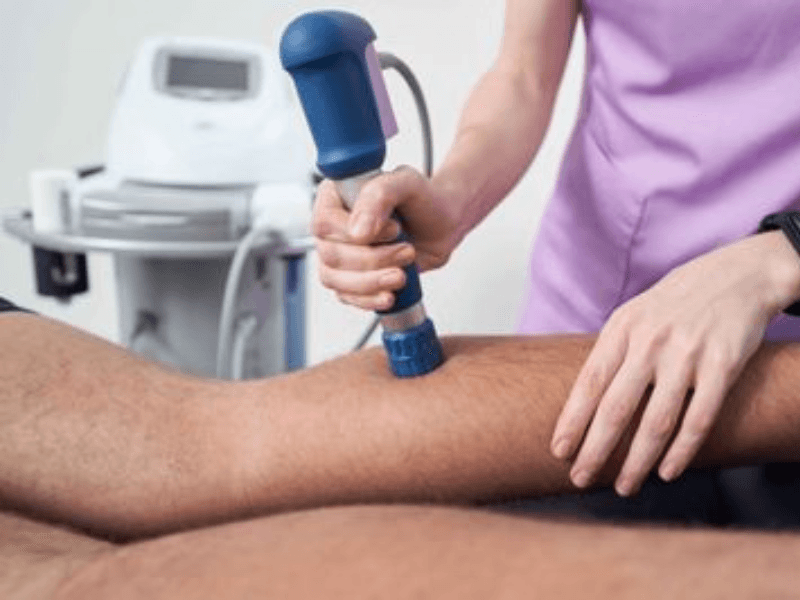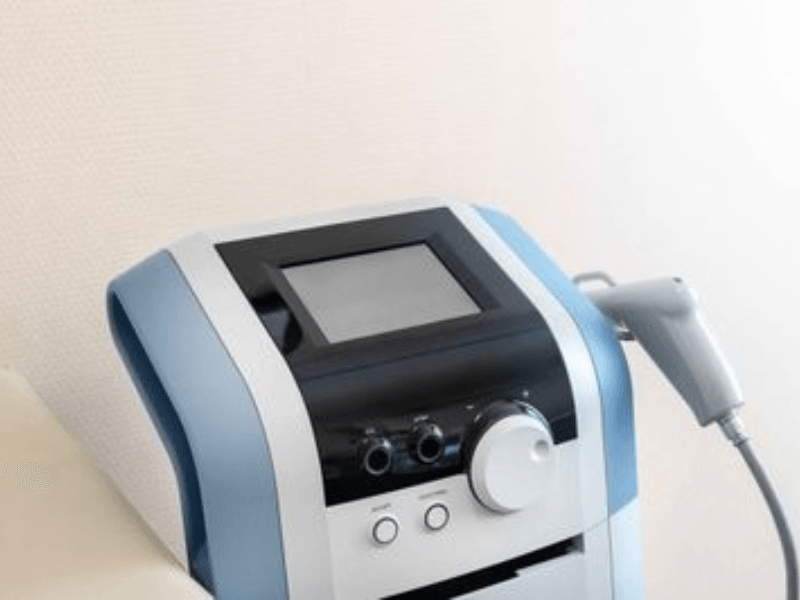Shockwave Therapy
Shockwave therapy is a non-invasive treatment for heel pain. This approach stimulates healing in affected tissues, reducing pain associated with conditions like plantar fasciitis or Achilles tendinopathy.
What is Shockwave Therapy, and How Does it Work?
Shockwave therapy is a cutting-edge, non-invasive treatment used for various musculoskeletal conditions. It involves the application of high-energy shockwaves to the affected area. These shockwaves prompt the body's natural healing process by inducing microtrauma, promoting blood circulation, and stimulating tissue regeneration. This therapeutic modality is particularly beneficial for chronic conditions like plantar fasciitis, Achilles tendinopathy, and other soft tissue injuries.
The shockwaves travel through the skin, targeting the affected tissues, and encourage the release of growth factors, which accelerate the body's healing response. Over a course of sessions, patients may experience a reduction in pain, improved mobility, and enhanced healing.


How is Shockwave Therapy Administered?
During a shockwave therapy session, a gel is applied to the skin to enhance shockwave transmission. The handheld device then delivers shockwaves to the affected area in short pulses. While patients might experience some discomfort during treatment, it's usually well-tolerated, and the duration of each session is relatively short.
Shockwave therapy sessions can range from three to six sessions, spaced over several weeks, depending on the condition being treated and the individual's response to therapy. It's crucial to have realistic expectations as the full benefits of shockwave therapy may take time to manifest.
Conditions Benefiting from Shockwave Therapy
Shockwave therapy has shown positive results in reducing pain and improving function in chronic musculoskeletal conditions that haven't responded adequately to conventional treatments.
Notably, it's been effective in addressing plantar fasciitis, Achilles tendinopathy, and other soft tissue injuries, showcasing promising outcomes in pain reduction and enhancing mobility.


Expected Outcomes and Considerations
While shockwave therapy has demonstrated effectiveness, individual responses can vary. Some patients experience immediate relief, while others may notice gradual improvement over the course of treatment. It's essential to follow the healthcare provider's guidance regarding the treatment schedule and post-treatment care for optimal results.
Additionally, discussing treatment expectations and possible outcomes with a healthcare professional helps manage expectations and ensures patients are well-informed about the potential benefits and any associated risks.
Shockwave Therapy – FAQs
Shockwave therapy is a non-invasive treatment that uses high-energy sound waves to stimulate healing in damaged tissues. It is widely used in podiatry and sports medicine for conditions that do not respond well to rest, medication, or other conservative treatments.
- Plantar fasciitis and heel pain
- Achilles tendinopathy
- Peroneal tendinopathy
- Tibialis posterior dysfunction
- Shin splints
- Chronic musculoskeletal pain in the foot and ankle
The device delivers sound waves through the skin to the affected area. These waves:
- Increase blood circulation
- Stimulate the body’s natural healing processes
- Break down scar tissue and calcifications
- Reduce pain by desensitising nerve endings
Some patients experience mild discomfort during treatment, but it is usually well tolerated. Any discomfort subsides quickly, and no anaesthetic is required. Many patients report pain relief after just a few sessions.
Most patients require a course of 3–6 sessions, spaced one week apart. Your podiatrist will recommend the appropriate number of treatments based on your condition and response to therapy.
A shockwave session typically takes 15–20 minutes, depending on the area being treated. You can walk out of the clinic and return to normal activities immediately.
Research shows that shockwave therapy is highly effective for many chronic tendon and soft tissue conditions. It can accelerate healing, reduce pain, and help patients avoid surgery in persistent cases. Results vary depending on the condition and individual response.
Side effects are generally mild and temporary. Some patients may experience redness, slight swelling, or soreness in the treated area, which typically resolves within a few days.
Costs vary depending on the number of sessions required. At Foot Foundation, we provide transparent pricing before treatment begins. Please contact our reception team or view our Price List for details.
Shockwave therapy is available at all Foot Foundation clinics, including:
- Takapuna, Auckland
- Remuera, Auckland
- Hamilton, Waikato
- Tauranga, Bay of Plenty
Book Your Shockwave Therapy Appointment Today
Foot Foundation provides specialist shockwave therapy—a non-invasive acoustic treatment that stimulates healing, increases blood flow, and breaks down stubborn scar tissue to reduce pain and improve function in conditions like plantar fasciitis and Achilles tendinopathy.
It’s well-tolerated, requires no anaesthetic, and has no downtime.
Your clinician will create a tailored rehabilitation programme, typically 3–6 sessions spaced weekly, alongside load management and exercises for lasting results.
Transparent pricing and convenient appointments are available in Botany, Remuera, Smales Farm, Rosedale, Hamilton, and Tauranga.



